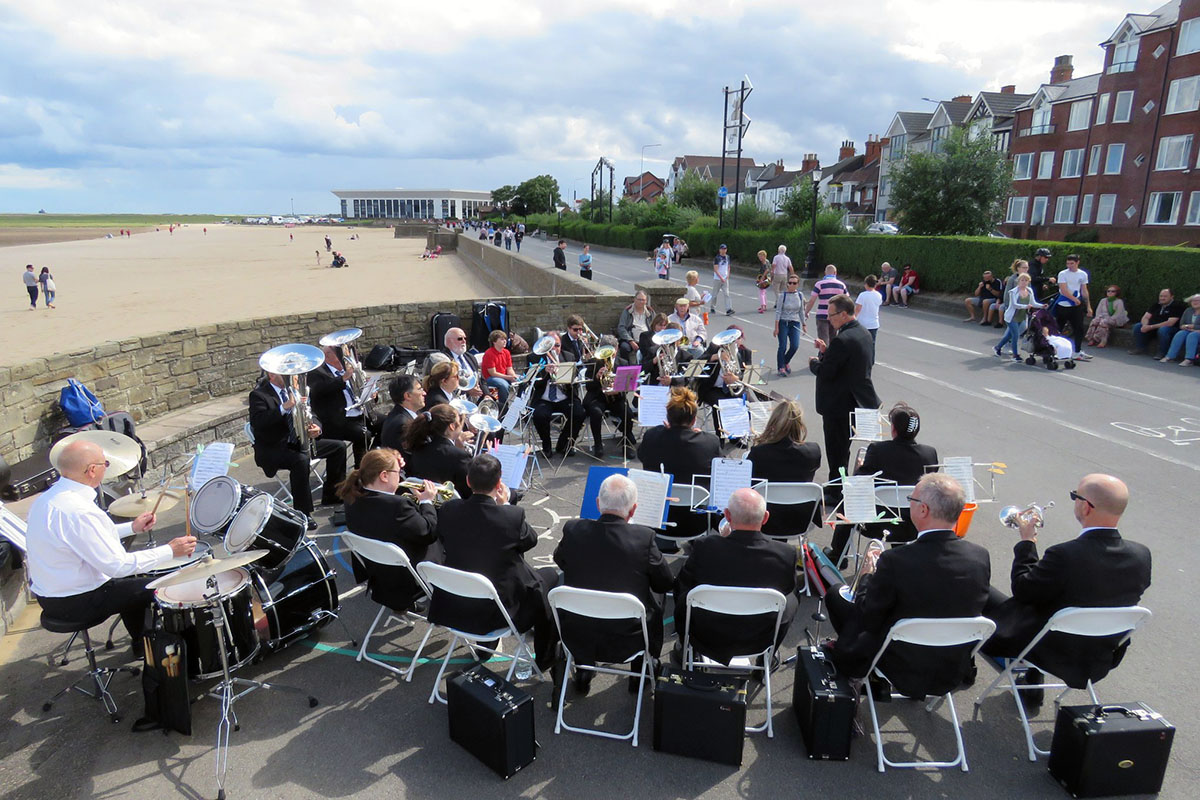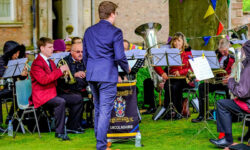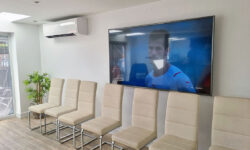
Following on the theme of our recent ventilation works for the Brass Banding community, Torr were delighted to be commissioned to install a new ventilation system for the Cleethorpes Brass Band rehearsal facility.
Ventilation plays a very important role in the comfort and, in the current coronavirus prominent times, the safety of brass instrument musicians rehearsing in enclosed environments. The committee of Cleethorpes Band recognised this, and taking a proactive stance, through recommendation from other local brass bands, commissioned Torr to install a bespoke system to improve air quality in their Cleethorpes based bandroom rehearsal facilities.
Take steps to improve ventilation as far as possible and whenever possible, both through the use of mechanical systems and opening windows and doors.
Brass Bands England advice – sourced from the Department for Digital, Culture, Media and Sport (DCMS).


Cleethorpes Brass Band has a rich heritage entertaining the public in the local area and beyond – pictured here circa 1925.
The Cleethorpes band have a fantastic rehearsal bandroom in the heart of the town. Providing the facilities for a full complement of 25 brass musicians, 3 percussionist, and a conductor.
Even with ample space for the band, ventilation of the stale air and the introduction of ‘tempered’ fresh air is extremely important in any room with 28+ people, and especially important where the nature of playing brass wind instruments is concerned.
The ventilation system of choice for the Cleethorpes bandroom was a Mitsubishi SAF1000E7.
The SAF1000E7 provides up to 1000 cubic metres per hour of fresh air flow, removing the same amount of stale air from the room. These models use a heat exchanger to recover up to 75% of the heat in the waste exhausted air taken out of the building, this is inputted to the fresh and filtered clean air delivered to the building making these units very energy efficient to run.
In addition to the free air tempering provided by the heat exchanger, this particular system was fitted with a 3kW heater bank, that is capable of raising the temperature of the incoming cold air by a further 10°C.
This helps keep the chill off the incoming fresh air during the winter time, and enables other forms of heating to stay switched off until the very coldest days.
This SAF system is capable of replacing the entire volume of air in the bandroom every 8.5 minutes, or 8 times every hour.

The specific difficulty with this ventilation project was the lack of space above the ceiling grid. The grid had been installed under an existing boarded ceiling, affording just 170mm of space to fit the ducted system in.
This space was only just deep enough to fit 150mm ducting in, but not near enough to fit the ventilation system in. That had to go elsewhere.
With the room having a flat roof and no loft space, the ventilation unit had to go in to the room next door.

Fortunately, the bandroom facilities included a large kitchen area, where the ventilation unit could be situated and later sectioned off in to a small plant room.

The SAF1000 was test fitted to check clearances for opening panels and removing filters during future maintenance works.
Penetration holes for the ducting were marked and drilled…

…And finally powered chiselled through.
With all penetrations complete, the SAF ventilation unit could be re-installed ready for connecting the ducting.

Interior ducting through to the bandroom is connected.
Exterior ductwork expelling the stale air and drawing in the fresh air is separated by 3 metres to prevent recirculation.
The flow & return spiral ducting is installed in to the ceiling void and the pre-prepared flexible ducting, with its 4 way splitter boxes, is lifted in to the ceiling and connected to the diffuser & egg crate grilles.

The electrical connections are made to power the ventilation unit, the heater bank and the wall mounted remote control.

After the electrical checks are complete, the system is powered up ready for testing & commissioning.
Control of the system via the remote control is very simple. Once the system is set up it is just a case of turning it on & off. The volume of air exchanged can be lowered, making the unit even more efficient, if there is a low occupancy in the band room – sectional rehearsals rather than the complete band.
The heater bank is controlled automatically by the heat exchanger unit and turns itself on and off as required. The heater also has a number of safety features built in to it to prevent it coming on when the ventilation system is not running.


The system is commissioned and the heater bank safety features are tested.

Testing the heater bank performance. Above we can see that the heaters are on and drawing 12.45 amps. The thermometer is taking 2 readings – comparing the difference between the temperature of the air being drawn in from outside and the temperature of the air after it’s gone through the heater on its way to the bandroom. We can see that the heater is warming the incoming air by 10°C.
This is consistent with our other temperature readings taken from outside (8°C) and from the ducting diffuser in the bandroom (18°C) as you can see above, giving a temperature rise of 10°C.
This testing was done with the unit on ventilation only mode – without the heat exchanger function running. This shows us purely what the heater bank alone is capable of outputting.
With the heat exchange function turned on, the ventilation unit uses the warmth of the air being extracted to warm the cool incoming fresh air, adding several degrees of free heating to the air before it reaches the heater bank.
This heat exchanging, or ‘tempering’ of the air also works in reverse if the room you are ventilating has air conditioning.
In summer, the cool air conditioned air leaving the room tempers the warm incoming summer fresh air to cool it down before it is returned into the room.

After testing & commissioning, the final seal of approval and sign off was given by Meggie, the Cleethorpes Band mascot!
Our thanks go to the committee of Cleethorpes Band, with special mentions to Rob & Dave for their time, efforts & input.
Thanks also to members of the City of Hull Band & Foss Dyke Band for their kind recommendations of Torr Engineering.
If you’d like more information on the Cleethorpes Band, you can visit their website, or pop by Facebook and take a look at their page.

















